If you want a decent home audio system but have no idea where to start, you've come to the right place. Here we'll explore the difference between vinyl and digital audio and, hopefully, give you an idea of the main components you'll need and what they do.
This will give you some basic idea of what they are and, with some luck, help you begin understanding how these components incorporate analog and digital formats into a home audio setup. To do the job right, you need special equipment to convert from analog to digital and back again.
And don't think you'll need to spend a small fortune. Even the most affordable system will give you a setup far superior to using a pair of earbuds to connect to your computer! Let's get stuck in, shall we?
Which format is best for a home audio system?
Before beginning to design your home audio system, you'll want to decide whether you'll be playing CDs, audio cassettes, vinyl, or purely digital audio. While this used to be a headache, most modern systems will let you play various formats in one place, which is handy.
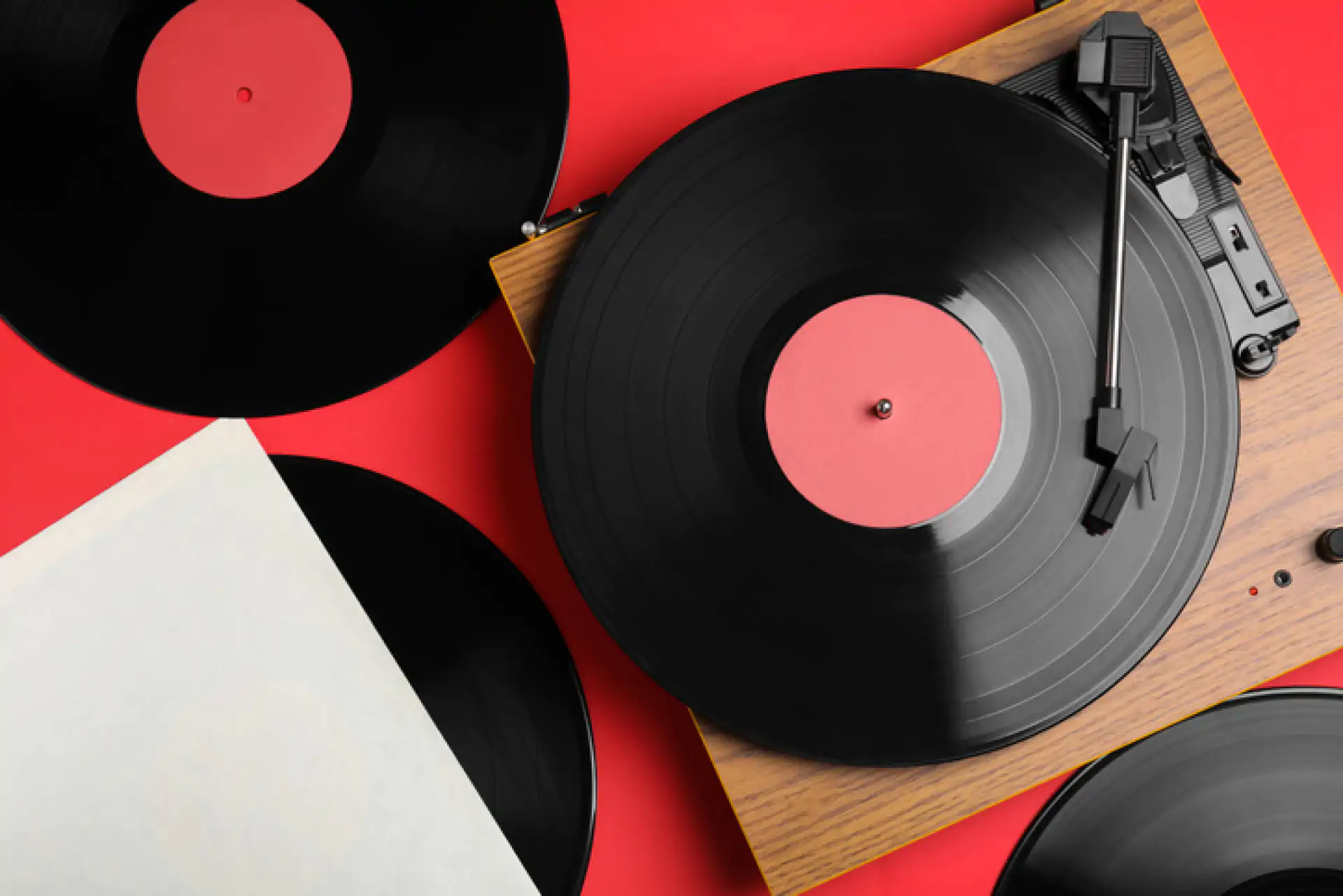
Liudmila Chernetska/iStock
So, what's the difference anyway?
In short, of all the major formats, only vinyl is analog. The others are all digitized copies of sound. While this might sound like a minor distinction, it does make a difference in sound quality.
A vinyl record's playing mechanism and its music are both mechanical. We can hear the mechanical sound more clearly when played because our ears are tuned to it.
But, of course, it is more complex than that. Many factors can also affect the audio quality beyond the format, like the records' condition, the sound system they are played on, etc.
A vinyl record that hasn't been adequately cleaned will drastically impact its audio quality. It will pop and crackle and harm the record's grooves over time. Likewise, as many of you know, dirty and scratched CDs can skip or fail to play altogether.
An excellent record that has been well-maintained and is being played on a high-quality surround sound system will sound considerably better than anything being streamed online. Other kits, like a bass kicker, can elevate your listening experience even more.
But, more on that later.
When choosing between formats, considerations need to be made for the limitations of each too. Vinyl, for example, is notoriously prone to scratching. If this happens, the player's needle won't advance properly.
If badly damaged enough, a vinyl record can become unplayable. But with the proper upkeep and cleaning, you can prevent that problem.
CDs are more difficult to scratch (but not immune to the problem) and can still play fine in the presence of some dust. The laser tracks can be scratched on a CD, but this is less likely to happen than with a record.
Streaming services are, of course, not affected by these kinds of issues at all.
Vinyl records also have the disadvantage of needing to be stored properly to avoid warping or damage. CDs, on the other hand, don't experience this issue, and they may be kept either vertically or horizontally, and as long as you don't damage the disc's underside, they will last a lifetime.
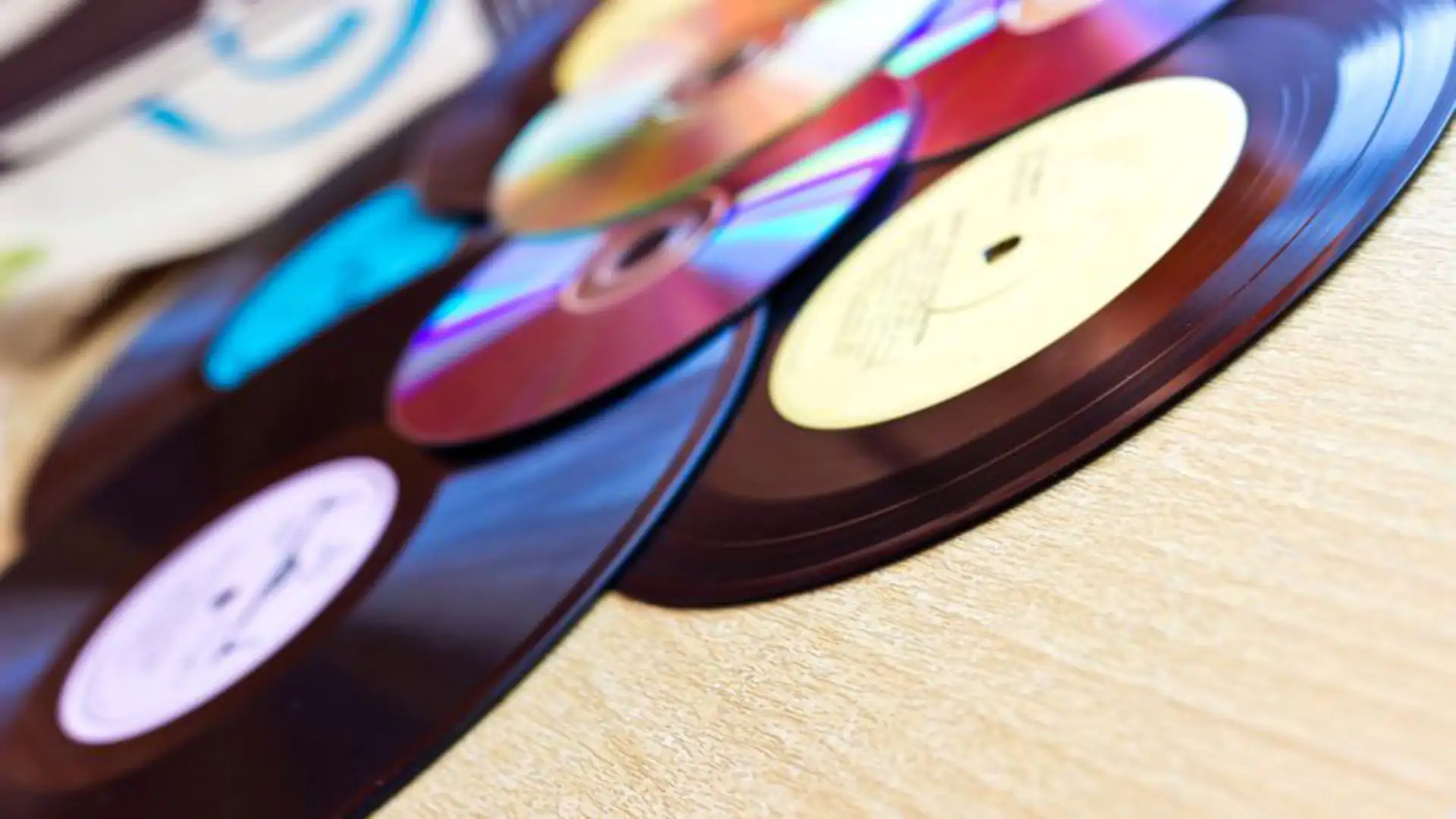
azamotkin/iStock
Since streaming services don't require physical storage, you'll always have the same sound quality and won't need to take up any space to keep your music.
Is vinyl better than CD or streaming?
Vinyl is widely considered the very best when it comes to sound quality, but is this true?
Beware, you are about to enter one of the most hotly debated subjects in home audio. We apologize in advance for now getting you involved. The short answer is — it depends on your opinion.
For those who advocate for vinyl, as we touched upon earlier, vinyl's primary advantage is that it is analog. This, in their opinion, makes a difference because of how our eardrums and other ear components transform sound waves into the sounds we perceive. It is argued that sounds generated mechanically "feel" more "real," if you like, whether true or not.
Since vinyl records and players are specifically designed for this purpose, elements of the recording are precisely measured and engraved.
Although it doesn't have the popping noises occasionally found on vinyl, digital can't duplicate the sound nearly as accurately for the human ear.
Because the vinyl and player produce sounds in a "smooth" production, sound from them is distinctly superior, according to vinyl advocates. It is richer and more fluid, if you like, as it goes up and down the scale.
When digital files are created, it consists of little snapshots over time. This is akin to making a series of photographs in quick succession. Vinyl records, on the other hand, are a constant scribing of the soundwaves over time.
The former occurs quickly but can have gaps that are usually absent for an analog media like vinyl, so the latter can be considered a "smoother," more accurate recording. However, the difference is likely imperceptible to most human beings.
This is called bit rate, and although digital recording accuracy increases with bit rate, it is still a series of snapshots rather than a complete recording, per se.
However, this is not widely accepted as true. Most sound engineers will tell you that we can precisely rebuild the original, continuous analog waveform up to the limitations of human hearing with digital recordings. For instance, a digital recording typically comprises at least 40,000 samples or "pictures" per second (CDs use 44,100 samples per second).
The richness of the sound is what makes a difference. You can appreciate how rich the sound is if you've ever heard an orchestra in person. The music has an almost palpable feeling in addition to the sound. The vinyl record's analog recording is the one that comes closest to recreating that richness.
The fact that the digital recording on a CD or DVD must be converted into an analog signal before speakers can transmit it is also quite amusing. Vinyl has the advantage of already being that way and not requiring translation.

Chalffy/iStock
However, according to other sources, there shouldn't be any real difference between vinyl and digital. According to vinyl skeptics, there are inherent issues with using vinyl as a data encoding medium that doesn't exist with CDs. This includes the requirement that vinyl records require physical constraints to play without skipping or producing distortion.
This restricts both the range of pitches (or "frequencies") you can hear and the dynamic range, which is the difference between the loudest and softest notes.
Other criticisms are that less audio can fit on a given amount of vinyl if notes are too low in pitch, and the stylus has trouble tracking excessively high notes, which results in distortion. Therefore, while mastering vinyl, engineers frequently use several techniques that change the sound of the music to reduce the extreme high or low ends.
For instance, "sibilance," or the hissy sound made by pronouncing certain consonants, particularly "s" or "z"s, in a rapid, sharp style, is a frequent cause of high pitches in recordings (ex.: "zip," "shack," "sap").
This causes enough issues that engineers who work with vinyl frequently have to "de-ess" recordings, either by directly instructing vocalists to pronounce songs differently or by altering the pronunciation to make it less sibilant.
Although "de-essing" is also a prevalent practice with other recording mediums, doing so in those cases is an artistic choice rather than something vinyl forces you to do. "De-essing" can also be accomplished by re-recording vocals, which might subtly change the music and cause vocalists to deliver words less passionately and lose some of their artistic expression.
So, it seems choosing between vinyl and digital media is to borrow a phrase, in the eye, or rather the ear, of the beholder.
Hopefully, you've made a judgment one way or the other, so now we can build your home audio system around your media of choice.
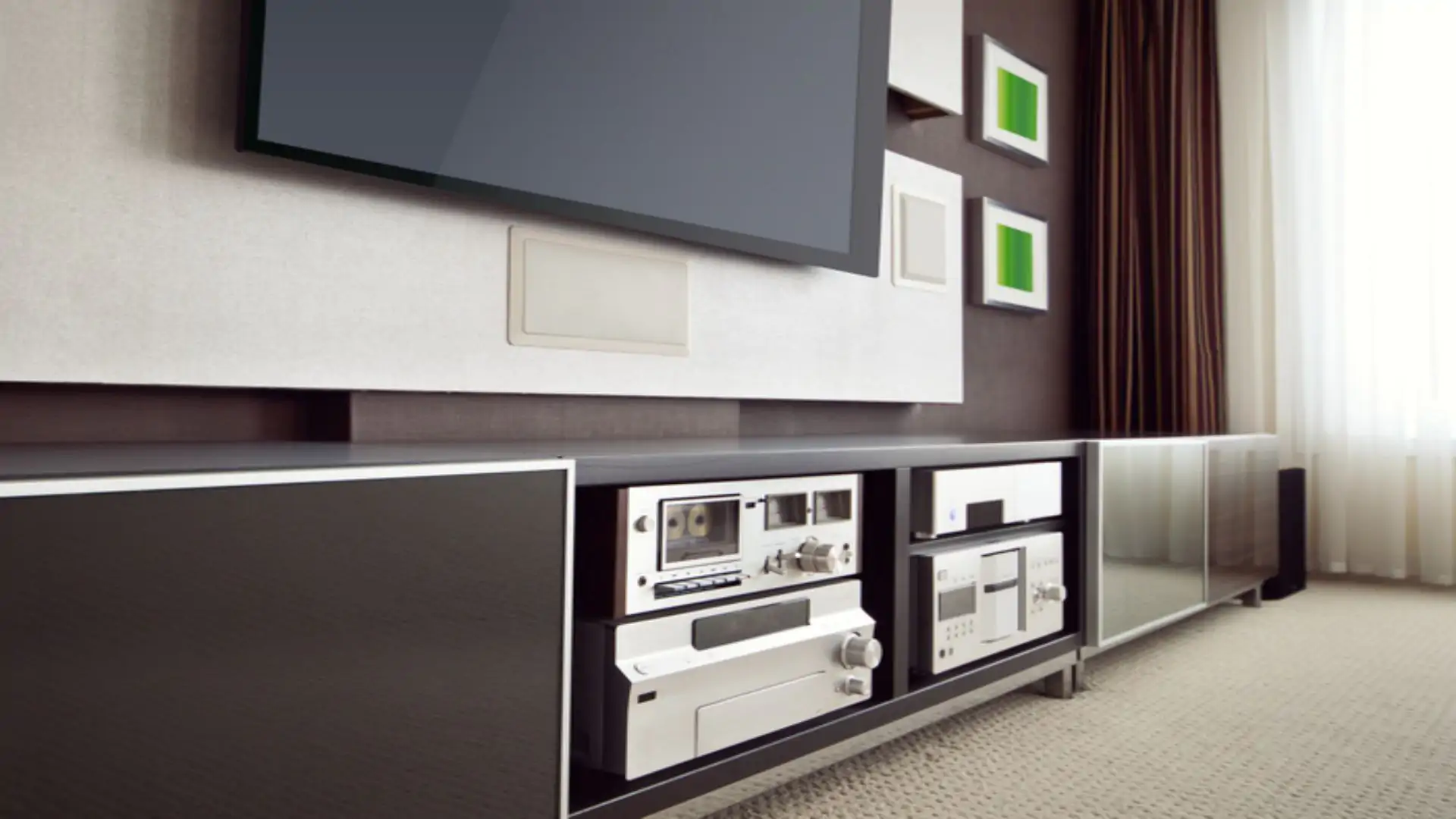
Viktorus/iStock
What do you need for a home audio setup?
Obviously, wou'll need some record/digital player and speakers, but what other gear is needed? Ultimately this will depend on your budget and needs, but there are some essential pieces of kit that any home audio system does need.
Let's take a look.
But before we get into that, here is something of a disclaimer. The following is a brief overview, not a dedicated, in-depth guide. For this reason, we've provided informative videos for most of the main components of a decent home audio system.
Before you dish out loads of cash on an expensive setup (which you don't necessarily have to), you should get professional help from retailers or dedicated home audio experts. Forewarned is forearmed, as the saying goes.
1. If you go vinyl, pay attention to the phono cartridge quality
An intricate electro-mechanical component called a phono cartridge holds the stylus in position on the end of a turntable's tonearm. This device also transforms the vibrations the stylus detects into an analog signal which is ultimately sent to your ears.
The most sensitive phono cartridges are the best. Investing in a better phono cartridge is a simple and rewarding way to raise the audio quality of your turntable. Many different phono cartridges are available, ranging from $100 to over $1,000.
Moving coil (MC) and moving magnet (MM) are the two primary types of phono cartridges, and each uses a different mechanism to turn vibrations into an audio signal. The general idea is that while MM cartridges are much simpler to manufacture, they have lower signal sensitivity and accuracy.
In most cases, the turntable on a machine you buy will have an MM cartridge if it's an entry-level model. Also, note that not all phono cartridges are compatible with all turntables. Before upgrading, ensure the new phono cartridge is compatible with your current turntable. If you are doubt, consult online guides or your local specialist retailer.
2. Speakers are one of the most critical components
Since speakers have the most significant influence on the sound you hear, they are the most crucial elements in any audio system. Simply put, they use the electrical signal supplied by your playback device—whether a turntable, CD player, or digital streamer—to vibrate their internal components, producing music.
Many internal elements of a speaker, including the crossovers, which divide the signal into reproduction in various drivers, the size and material of the cabinet, and the caliber and number of speaker drivers, will significantly impact the final sound.
The two primary categories of loudspeakers you need to be aware of are passive and active. For passive speakers to function, the signal from the playback device must first be amplified for them by another device, such as a receiver or amplifier.
An active speaker has a built-in amplifier tailored to that particular speaker. Both types come with trade-offs, of course. While active speakers are more expensive, they don't need many additional components to function, while passive speakers are more affordable and adaptable.
Despite what you may have heard, the cabling used to transmit the signal is of relatively low importance.
3. The right headphones can help too
While speakers are essential, you may sometimes want to feel fully immersed in your home audio experience, especially if you live with others and don't want to disturb them.
In this case, choosing a decent set of headphones is another critical decision.
For a proper stereo pair of headphones, the left earcup serves the same purpose as the left-sided speaker, and the same is true for the right earcup and the right-sided speaker. The fundamental distinction between the two is that the preceise location of each speaker can significantly impact their ability to produce high-quality sound.
In contrast, headphones contain the sound to just the ears and so provide a controlled environment for sound.
There are many different varieties of headphones, including open-back and closed-back models and those with different types of drivers (dynamic, electrostatic, or planar magnetic).
Still, the development of wireless headphones has received the most attention recently. Instead of using cords, these headphones collect radio signals over the air and convert them into sound using onboard DSP (digital signal processing) and amplification.
4. Don't forget the amplifier!
An amplifier's role is to take a weak electrical signal from a playback device and amplify it so your speakers or headphones can play it. Amplifiers are sometimes known as power amplifiers or stereo amplifiers.
You wouldn't be able to hear your music very loudly, if at all, without an amplifier. This is particularly true when using high-fidelity open-back headphones, which need a signal that has been dramatically increased.
"Integrated" amplifiers have essentially replaced traditional power amplifiers in the era of contemporary hi-fi. To serve as the primary hub of both a digital and an analog hi-fi system, integrated amplifiers combine the previously separate components of a power amplifier, a phono preamp (more on that in a moment), and several wireless and cable networking options.
Moreover, they all come with an amplifier built in if you have wireless speakers or headphones. Pretty neat!
5. A decent receiver is always a good idea too
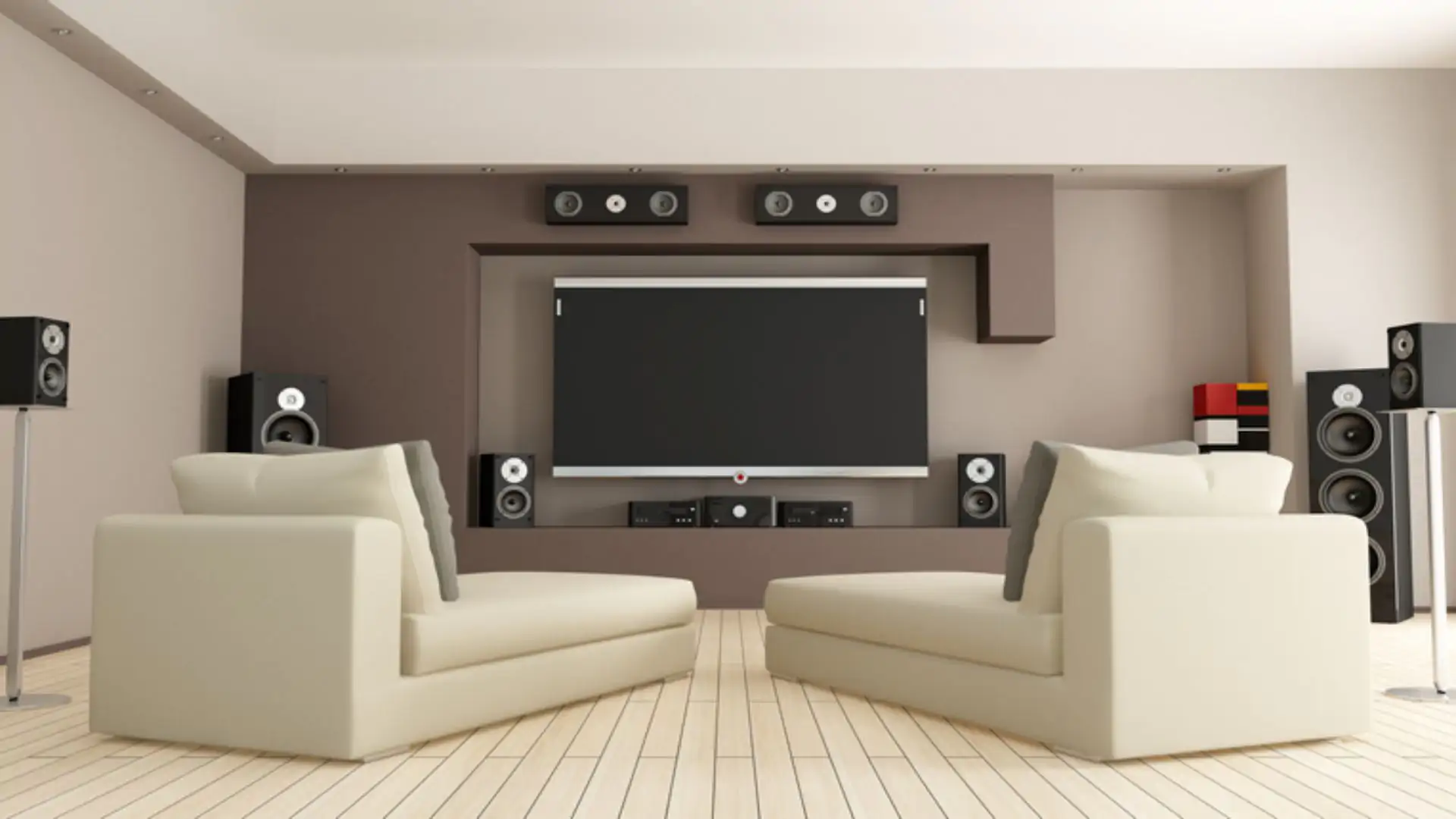
archideaphoto/iStock
You can play music on your hi-fi system without an analog source like a CD player, cassette tape player, or turntable by using a receiver, which is typically just an amplifier with an integrated radio. Today's receivers serve a similar purpose as a hub for wireless signals.
Still, they also offer various connectivity options that let you stream music from your computer or smartphone straight to your system.
Stereo receivers and AV (audio/video) receivers are the two primary categories of receivers. An AV receiver, also known as a home theatre receiver, is made to connect to your TV and power several channels, making it perfect for a surround sound system with many different speakers.
In contrast, a stereo receiver can only power a two-channel system (often a set of passive speakers). An AV receiver is essentially a stereo receiver that is far more powerful and versatile.
6. DAC's certainly help
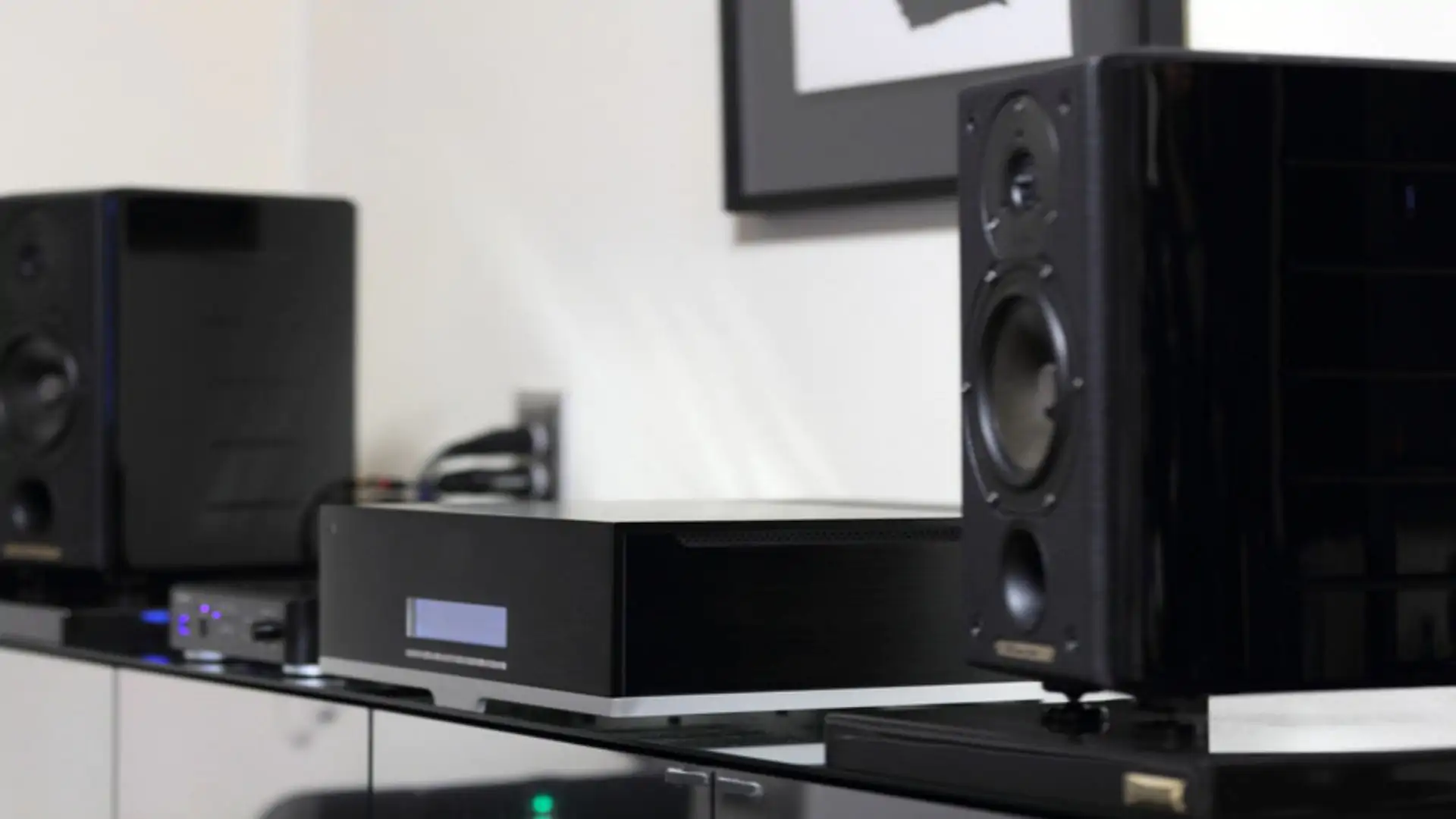
warioman/iStock
The crucial element known as the digital-to-analog converter, or DAC, is frequently included in amplifiers. These pieces of kit transform the digital signal sent from your computer or smartphone into an analog signal that an amplifier may amplify.
Only when using a digital source, such as a computer or smartphone, as opposed to an analog source, such as a turntable or CD player, is a DAC required.
The only time you should seriously consider purchasing an external DAC is if your source, be it your computer, smartphone, or other devices is adding a lot of noise (graininess or static) to your music. You're more likely to notice this noise if you're using a good set of headphones or high-end speakers.
Every laptop and smartphone includes a built-in DAC (and amplifier), but these devices are typically not very good. If the audio quality on your PC or smartphone is poor enough that you can hear its shortcomings, investing in an external DAC or DAC/amp combination is a simple method to improve it.
7. If you go vinyl, don't forget the preamplifier
Any turntable hi-fi system needs a phono preamplifier, usually referred to as a phono stage or phono preamp. This thing has two primary roles to play.
First, it pre-amplifies the feeble signal coming from the phono cartridge of the turntable before sending it to the amplifier so that your speakers can play it at a respectable volume. It also equalizes the signal to make the record sound as close to the original recording as possible.
Many turntables available today have phono preamplifiers built into them, which tend to be called "integrated" turntables. This setup lets you connect them straight to an amplifier or powered speaker.
The system is easy to use and practical. Although a dedicated external phono preamplifier will almost always sound better when connected to a turntable because doing so decreases the amount of extra noise introduced to your signal.
9. Why not consider getting a streamer?
The pinnacle of home audio equipment for some is a network streamer or digital music streamer. You can think of it as a dedicated PC that stores and streams your digital music.
It's a fantastic alternative for those who want to convert their CD collection into a digital library or maximize the use of lossless streaming services like Tidal or Qobuz so they can enjoy high-resolution audio at home.
However, dedicated digital music streamers' functionality, compatibility, and streaming support might differ widely. The better ones, like the Naim Audio Uniti Atom or the Cambridge Audio CXN V2, have their interfaces and built-in storage and are compatible with expensive services like Roon or BluOs.
And that's your lot for today.
We hope this little guide has given you insight into the challenging world of designing a decent audio system. While the above might seem a little overwhelming initially, as you explore options, it'll all fall in place in no time.
Good luck, and enjoy your home audio system once you finally get it installed.
This story is part of THE SOUND GUIDE, Interesting Engineering's special issue dedicated to all things sound and audio.
 SHOW COMMENT (1)
SHOW COMMENT (1)


Foresight helped an Austrian city protect its buildings from the European floods in 2021. The flood protection barriers they used now have a rising demand across Europe.

 Researchers just exposed what's in tattoo ink — and it’s a ‘significant problem’
Researchers just exposed what's in tattoo ink — and it’s a ‘significant problem’
 Engineered cells touted to treat the most aggressive cancers in the world
Engineered cells touted to treat the most aggressive cancers in the worldIn a first, researchers discovered a rare mineral that comes directly from Earth's lower mantle

Germany to arm Ukraine with 5th generation tank-like drones to battle Russia



